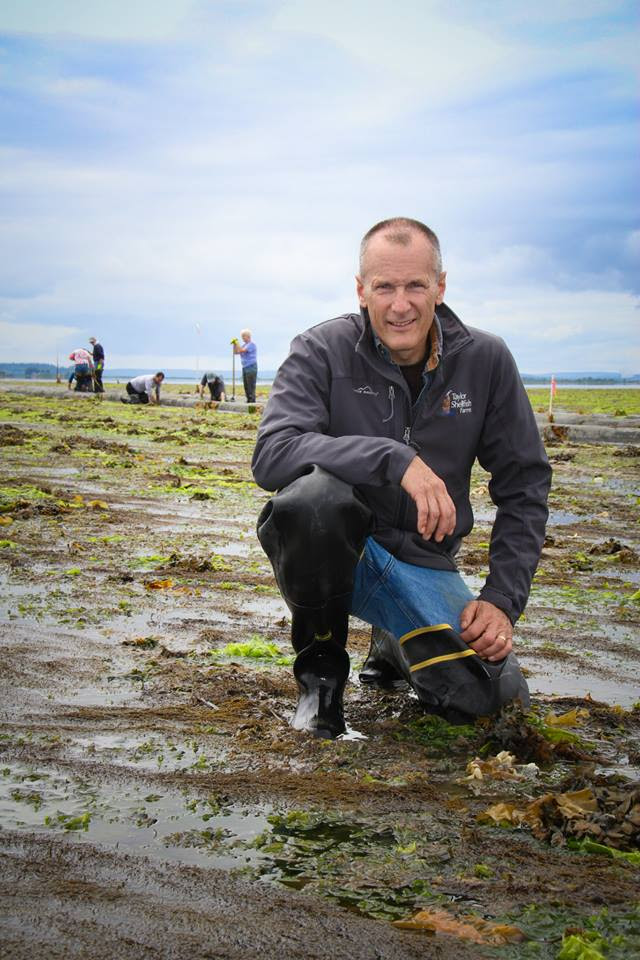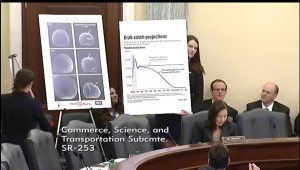Bill Dewey of Taylor Shellfish Tells How GOH Helped Lead a Collaborative Response to OA
Bill Dewey, Director of Public Policy and Communications for Taylor Shellfish Farms in Washington, is no stranger to tackling ocean acidification (OA). Since oyster larvae production first plummeted in the mid-2000’s, he has been working to rally support for shellfish growers and raise awareness of the threat of OA. “The nature of OA,” says Dewey, “requires a collaborative response. But I don’t think our response would have been nearly as collaborative if it hadn’t been for Brad Warren and Eric Swenson [of Global Ocean Health] and all their efforts.”
in Washington, is no stranger to tackling ocean acidification (OA). Since oyster larvae production first plummeted in the mid-2000’s, he has been working to rally support for shellfish growers and raise awareness of the threat of OA. “The nature of OA,” says Dewey, “requires a collaborative response. But I don’t think our response would have been nearly as collaborative if it hadn’t been for Brad Warren and Eric Swenson [of Global Ocean Health] and all their efforts.”
One such collaborative effort helped spawn Washington’s Blue Ribbon Panel on Ocean Acidification. In 2012, around the time Washington Sea Grant held its Symposium on Ocean Acidification, Dewey was working to get a Washington Shellfish Initiative launched. Brad and Terry Williams, of the Tulalip Tribe, came to him and asked, “What do you think it would take to get OA parceled into the shellfish initiative?” Dewey recalls, “I don’t know why it hadn’t dawned on me sooner. We plugged it in, and now it’s one of the most recognized activities of the initiative.” Former Governor Gregoire launched the initiative and called for the panel in one swoop. “If it wasn’t for Brad’s idea and drive,” says Dewey, “the Blue Ribbon Panel would not have happened. The panel pulled stakeholders together in a very unique way and made a huge difference. I really credit Global Ocean Health (GOH) for pulling that together.”
Serving on the panel with Brad, Dewey appreciated how Brad “engages with people in a way that’s factual and non-threatening,” a core element of GOH’s strategy. This approach, says Dewey, “challenged people and made them more receptive, and as a result the Blue Ribbon Panel put forward stronger recommendations.”
During the panel process, the shellfish industry realized they needed an “aha” photo, to tell the story of OA’s impacts on their products. GOH secured funding for Taylor Shellfish to spend time on Oregon State University’s scanning electron microscope (SEM) to document how more acidic conditions in the hatchery affected their oyster larvae. “It was a tremendous eye opener for us,” says Dewey, “to see a healthy larva next to a mangled larva. We thought they were just dissolving, but in fact they were not building their shells. That’s been hugely insightful for us.”
The SEM photos enabled by GOH’s funding have rippled throughout the community. Dewey speculates they may have stimulated George Waldbusser of Oregon State University to look further into what was happening in those first 48 hours of life–an investigation that drew fascinating conclusions showing how oysters manage their energy during this critical early period. At a press conference with Governor Gregoire Dewey used the photo in a presentation. Afterwards, the governor approached him and said, “I’ve never seen that photo before. Tell me more about it–can I use it?” During the question and answer session afterwards, says Dewey, “The governor used the photo and went off on it.”

